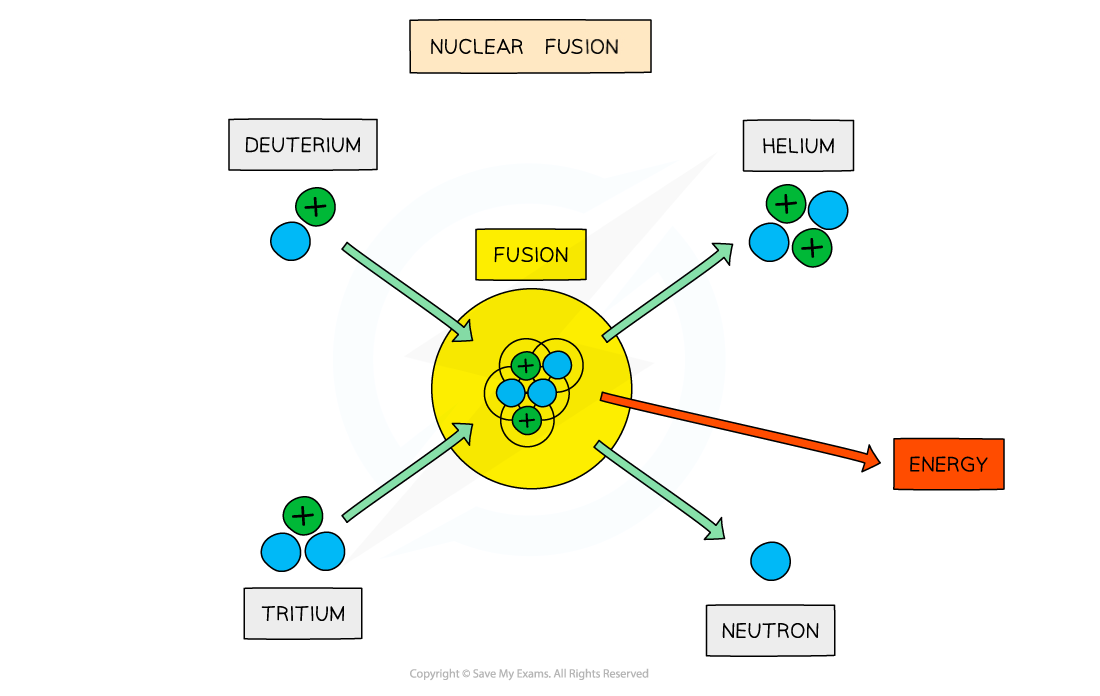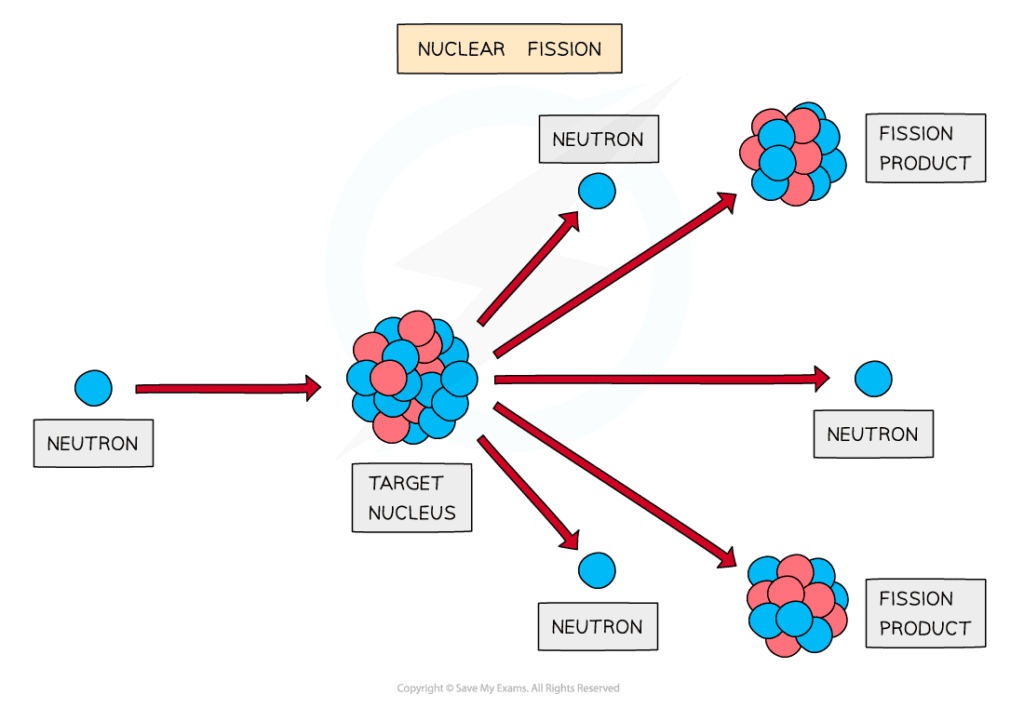Chapters

How is Nuclear Energy Produced?
Get ready to explore the incredible power of nuclear energy! From the massive reactors that power cities to the tiny atoms that make up matter, nuclear energy is one of the most powerful forces in the universe. In this article, we'll dive into the basics of nuclear energy, including its sources, how it's calculated, and the factors that can affect its strength. Whether you're a science buff or simply curious about the forces that shape our world, this article will take you on a journey into the fascinating world of nuclear energy. So buckle up and get ready to uncover the secrets of this incredible force!
Nuclear Energy Defined
Nuclear energy can be defined as:
"The energy that is released during nuclear reactions"
The energy stored in the nucleus of an atom is incredibly high - around a million times more than the energy involved in chemical reactions. This makes nuclear reactions capable of releasing vast amounts of energy, as seen in nuclear bombs. If managed safely, nuclear energy could help reduce our reliance on fossil fuels, leading to lower pollution and greenhouse gas emissions.
Sources of Nuclear Energy
Nuclear reactions can be triggered by processes like:
- Fusion
- Fission
- Radioactive decay
Fusion
Fusion occurs when two small atomic nuclei combine to form a larger one. While fusion does not happen naturally on Earth, it does occur in stars. We can create fusion reactors artificially, such as when deuterium and tritium (hydrogen isotopes) combine to form helium, releasing a significant amount of energy.
The amount of energy released during nuclear fusion is tremendous - the energy from just one kilogram of hydrogen undergoing fusion is equivalent to the energy released by burning approximately 10 million kilograms of coal.
The Sun undergoes different nuclear fusion reactions, with the simplest one being when four hydrogen nuclei combine to form one helium nucleus. The missing mass from this fusion reaction is converted to energy and is radiated away by the Sun.
Although the energy released from fusion may seem small, the fusion of just four hydrogen nuclei releases a large amount of energy. However, fusion is difficult to achieve on Earth because it requires intense pressure and high temperatures to overcome electrostatic repulsion between positive nuclei.
In order to achieve fusion in a reactor on Earth, temperatures between 100 and 200 million degrees are required, making it difficult to build a practical and economic fusion power station. Despite successful experiments, such as the JET experiment near Oxford, scientists have not yet been able to create a financially viable fusion reactor.

Fission
Fission is a process in which a large nucleus breaks down into two smaller nuclei. The original nucleus is called the parent nucleus, while the smaller nuclei created through fission are called daughter nuclei. This is the process used in nuclear power stations to produce energy.
Both uranium and plutonium isotopes are utilized as nuclear fuels in power stations by undergoing fission. When an unstable nucleus or parent nucleus collides with a neutron, fission occurs, leading to the formation of daughter nuclei, neutrons, and gamma rays.

Parts of Fission Reactors
A fission reactor has several parts
- Nuclear fuel: It is the uranium or plutonium that will split when hit by an incoming neutron, held in rods
- Moderator: For example, graphite core slows down neutrons, making them more likely to be absorbed by a nearby fuel rod
- Control rods: They can be raised or lowered to prevent neutrons from traveling between fuel rods, affecting the speed of the chain reaction
- Coolant: It is heated by the energy released by fission, is used to boil water to drive turbines in the power station
- Concrete shield: It is used to prevent radioactive daughter products from escaping and posing a hazard
- The reactor: It features are designed to control the speed of the reaction and temperature inside the shield
An uncontrolled fission reaction is the basis of an atomic bomb.
Fission of Uranium - 235
Uranium-235 is a commonly used fuel in nuclear reactors. Although it has a long half-life of 700 million years, it releases energy slowly and is unsuitable for energy production. Induced fission occurs when a neutron is absorbed by the uranium-235 nucleus to form uranium-236, which is highly unstable and immediately undergoes nuclear fission.
Radioactive Decay
Radioactive decay is a process where the unstable nucleus of an atom releases energy in the form of radiation, such as alpha or beta particles. This process can be harnessed to produce nuclear energy. In nuclear power plants, the decay of radioactive materials, like uranium, generates heat which is then used to produce electricity.
Main Nuclear Fuels
Uranium and plutonium are the primary nuclear fuels used in nuclear power plants. Within the reactor, the nuclear fuel undergoes a controlled chain reaction, which produces heat. This heat is then used to convert water into steam in the boiler. The steam drives the turbine, which converts the heat energy into kinetic energy. Finally, the kinetic energy is used to generate electricity through the generator, converting it into electrical energy.
How to Calculate Energy Released in Nuclear Reactions?
The nuclear energy released during a nuclear reaction can be calculated using the famous equation:

Here:
- E is the energy released
- m is the mass defect (the difference in mass between the reactants and products)
- c is the speed of light.
Advantages and Disadvantages of Nuclear Power
Nuclear power has both advantages and disadvantages which are described in this section.
Advantages
- Nuclear fuels do not emit greenhouse gases such as carbon dioxide, unlike fossil fuels.
- Nuclear fuels do not emit gases such as sulphur dioxide which cause acid rain.
- 1 kg of nuclear fuel produces millions of times more energy than 1 kg of coal.
Disadvantages
- Nuclear fuels used for fission, such as uranium ore, are non-renewable energy resources, similar to fossil fuels.
- In case of an accident, large amounts of radioactive material could be released into the environment, although modern reactor designs are extremely safe.
- Nuclear waste remains radioactive and is hazardous to health for thousands of years, and must be stored safely.
- Decommissioning a nuclear power plant is extremely expensive.
Factors Affecting Nuclear Energy
There are several factors that can affect nuclear energy. Some of those factors are discussed below:
- Nuclear fuel: The type of fuel used in a nuclear reactor can affect the amount of energy produced. For example, uranium-235 is commonly used as fuel in nuclear reactors because it is easily fissile (meaning it can be split easily), and it produces a large amount of energy when it undergoes fission.
- Reactor design: The design of a nuclear reactor can also affect the amount of energy produced. The efficiency of the reactor depends on how well the nuclear fuel is used and how well the reactor is designed to control the speed of the reaction.
- Temperature and pressure: The temperature and pressure inside a nuclear reactor can also affect the amount of energy produced. For nuclear fusion to occur, high temperature and pressure are required to force the nuclei together and overcome the electrostatic repulsion. Similarly, in nuclear fission, the energy released depends on the speed and direction of the neutrons involved in the reaction, which are affected by the temperature and pressure of the reactor.
- Radiation shielding: Radiation shielding is important in a nuclear reactor to prevent radiation leaks and to protect workers and the surrounding environment. The type and amount of shielding used can affect the efficiency of the reactor.
- Maintenance and safety: Maintenance and safety procedures are critical in nuclear power plants to prevent accidents and ensure that the reactor is operating efficiently. Proper maintenance and safety procedures can also help to extend the life of the reactor and minimize the risk of accidents.












You are the best,, coz you have gotten content about the topics
Hello ! Glad to hear that you’ve found the content useful!